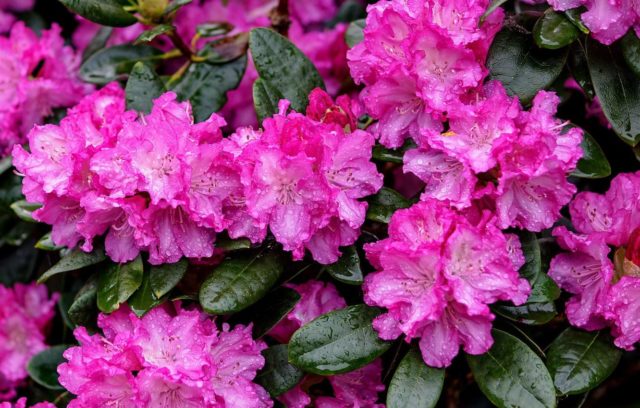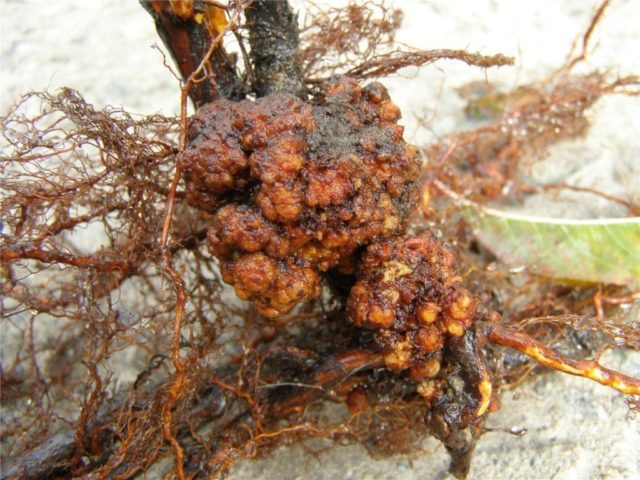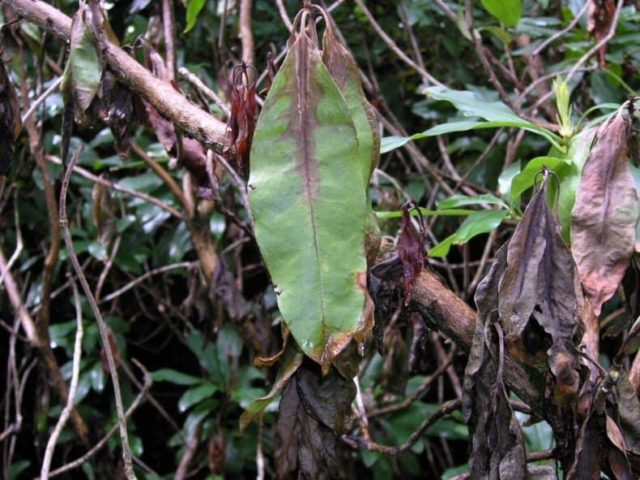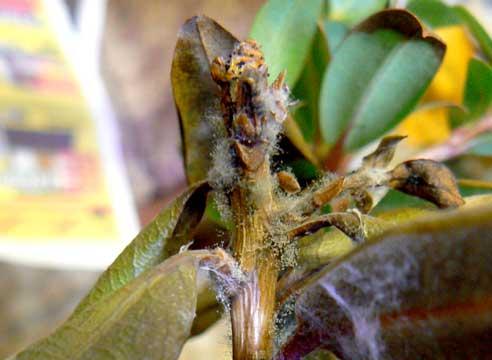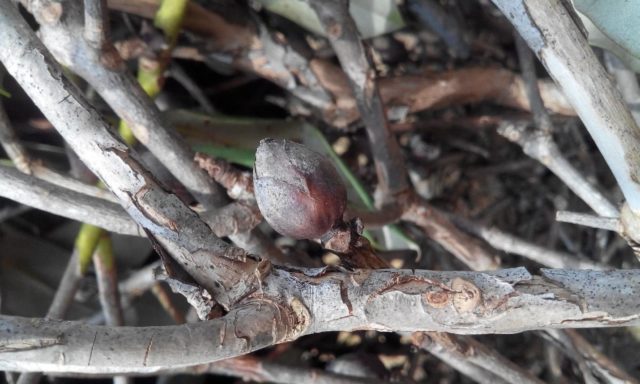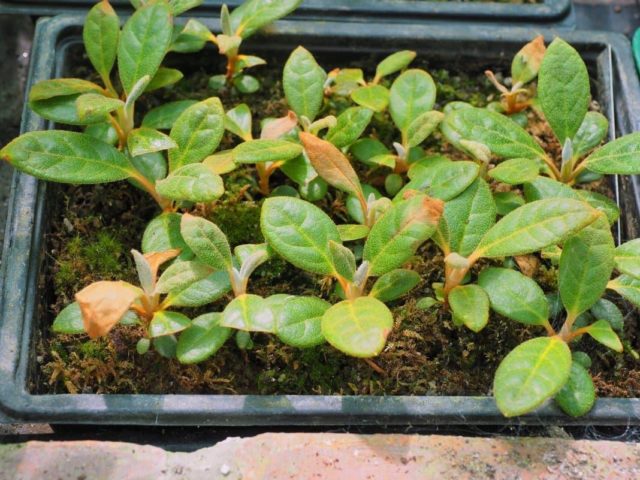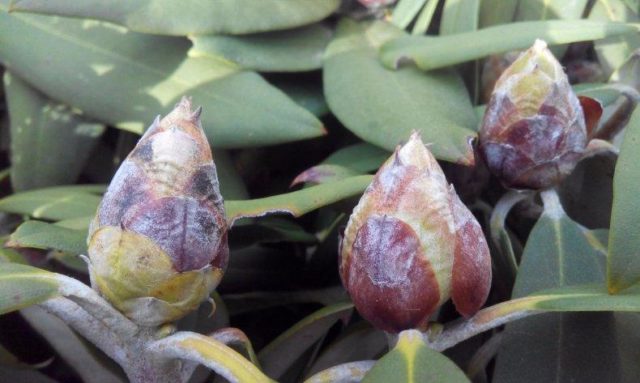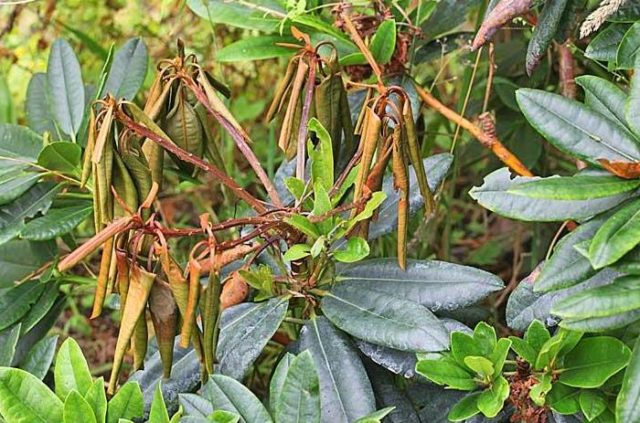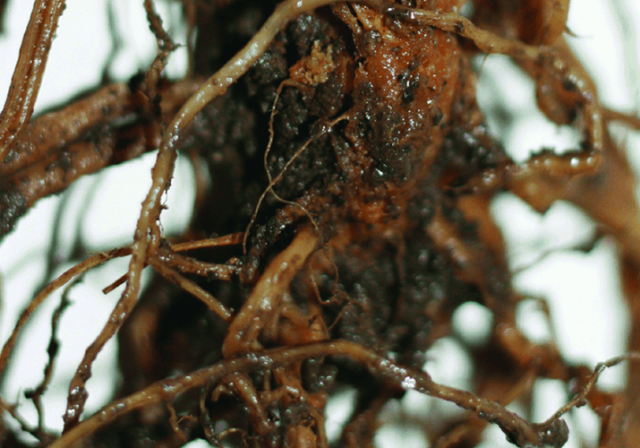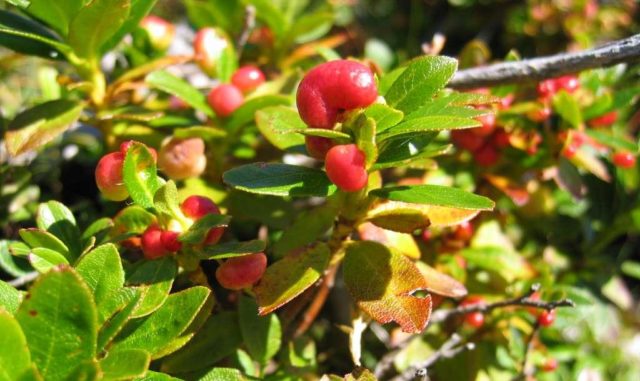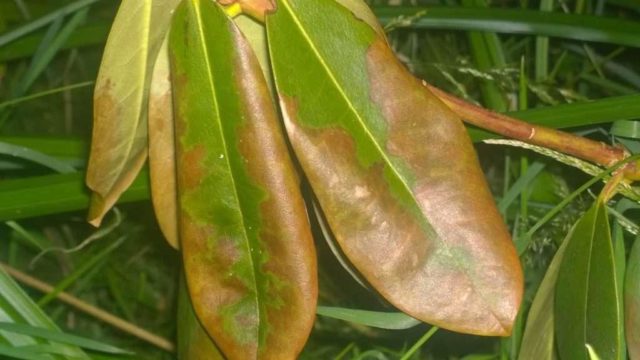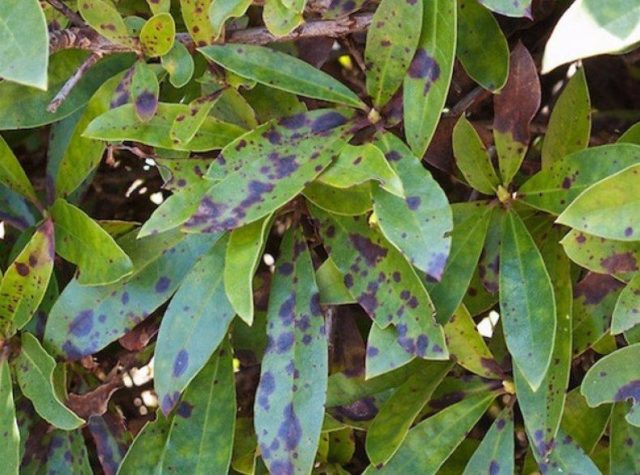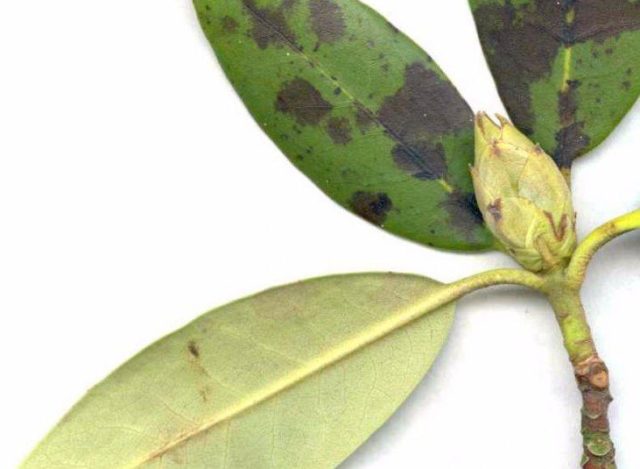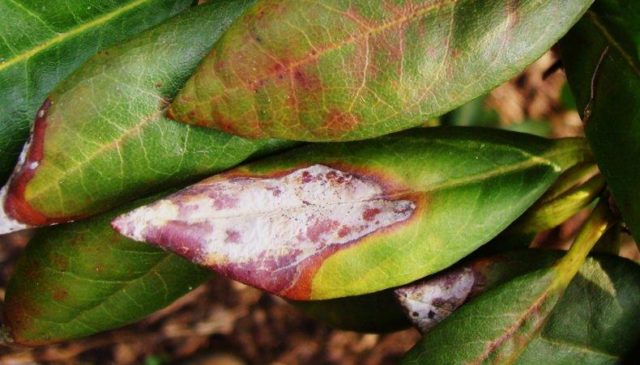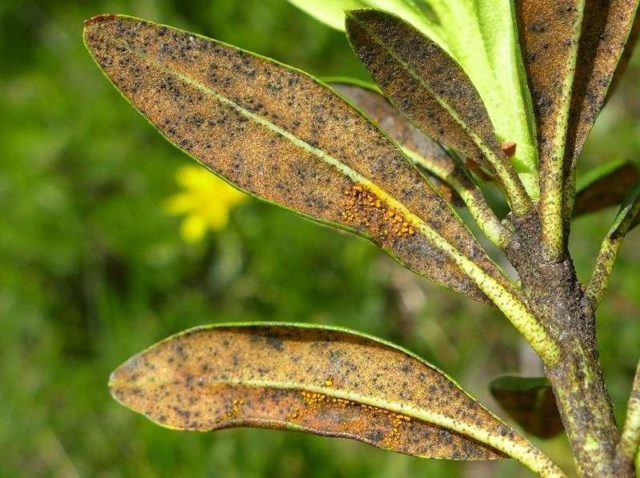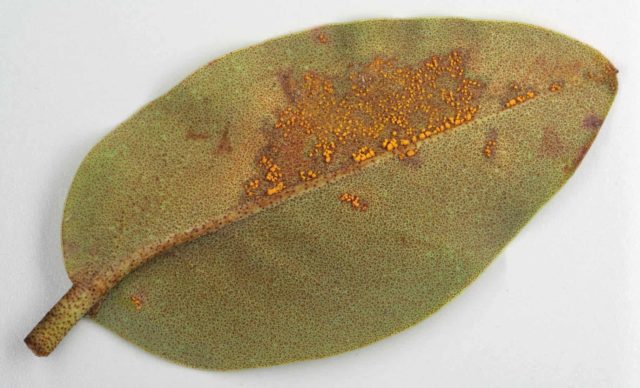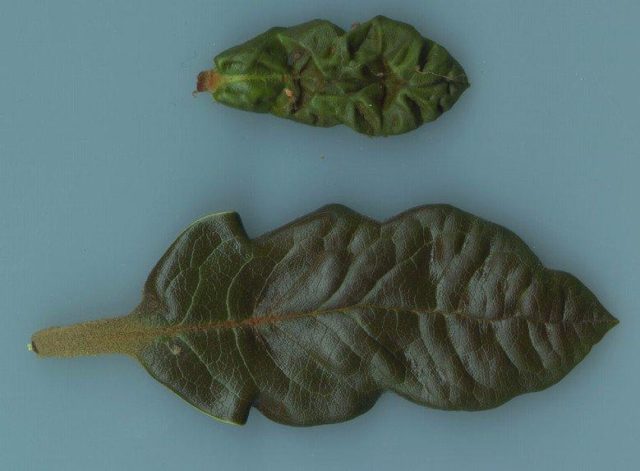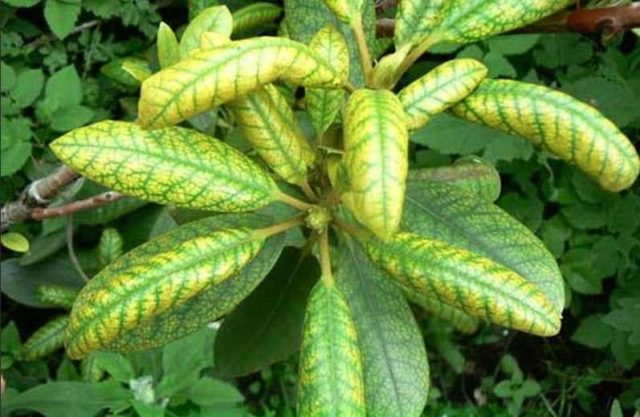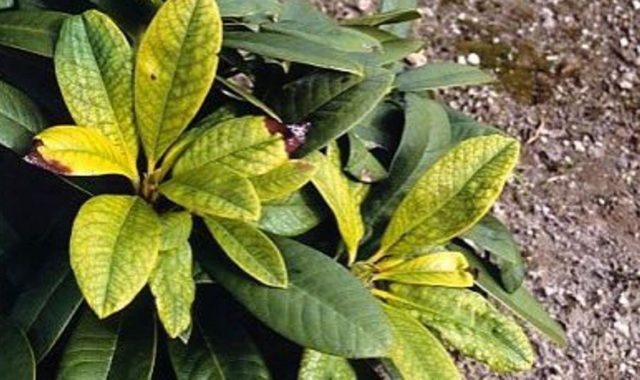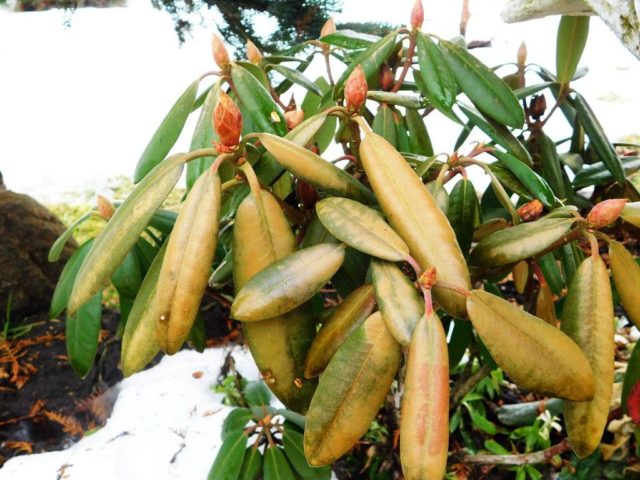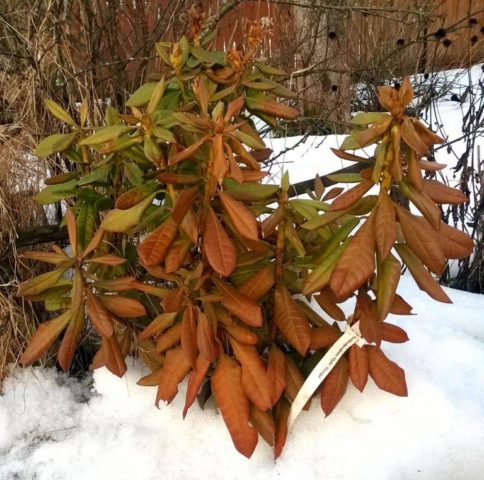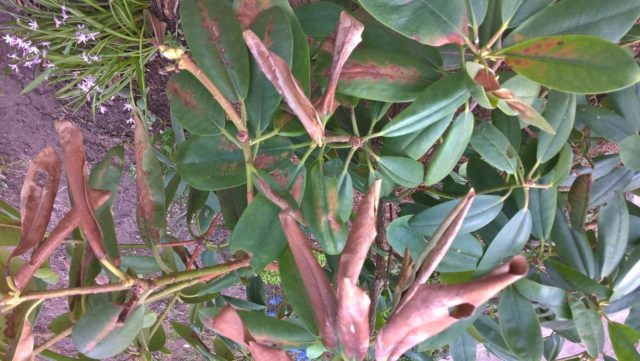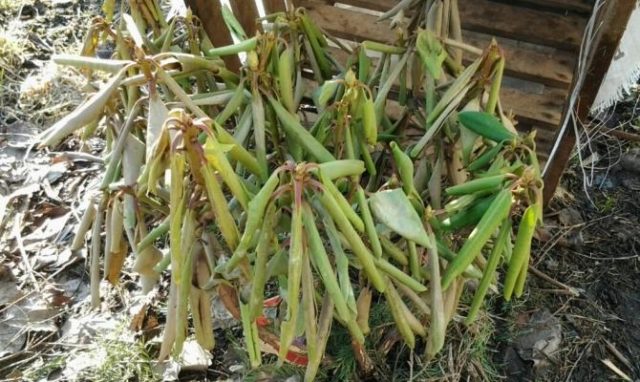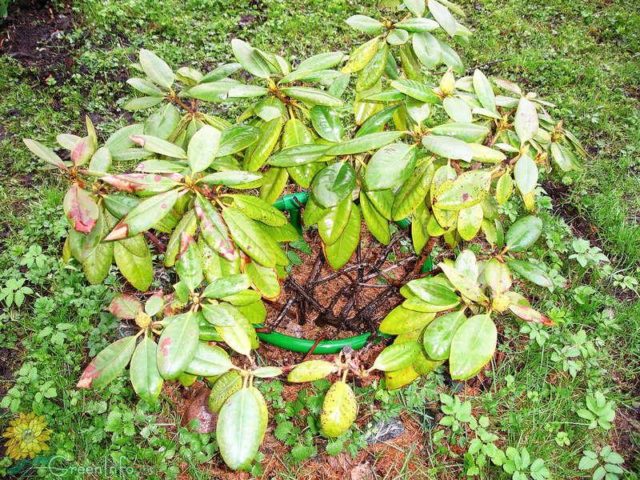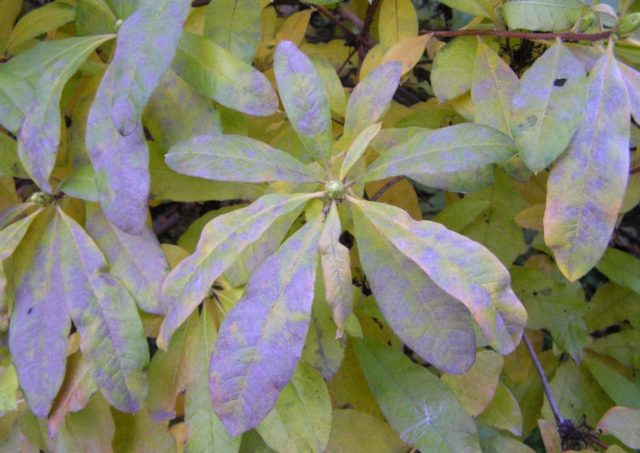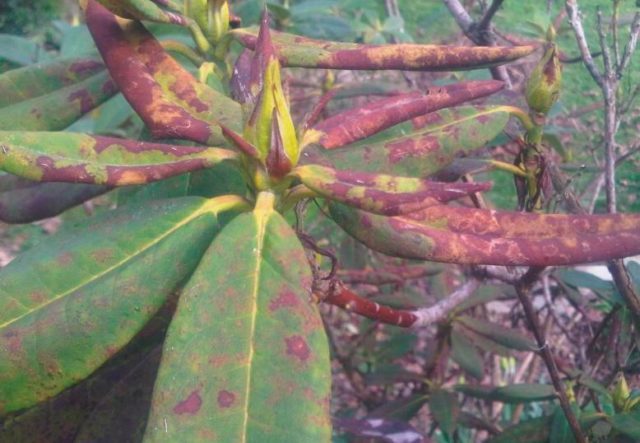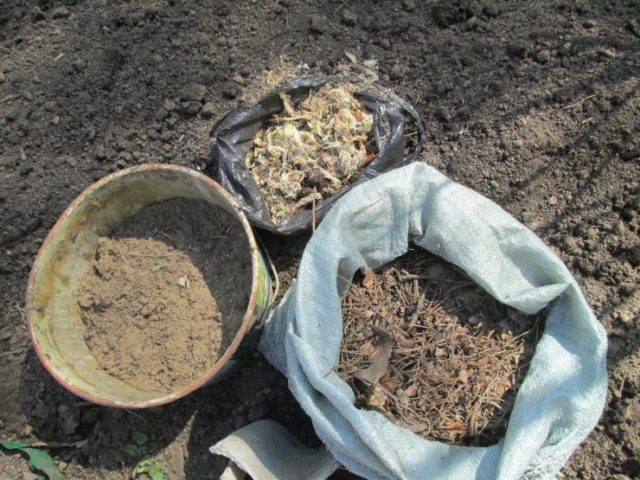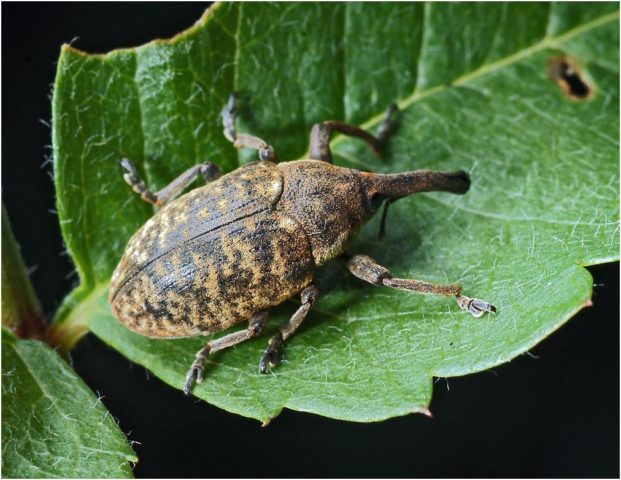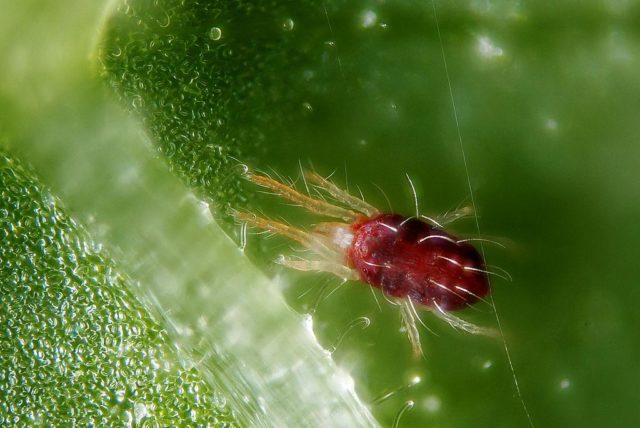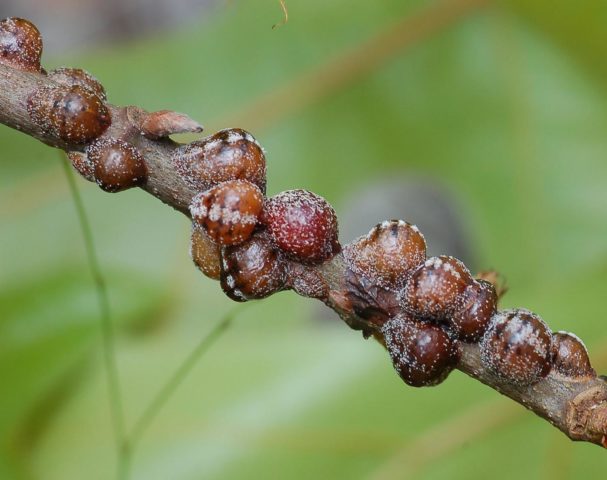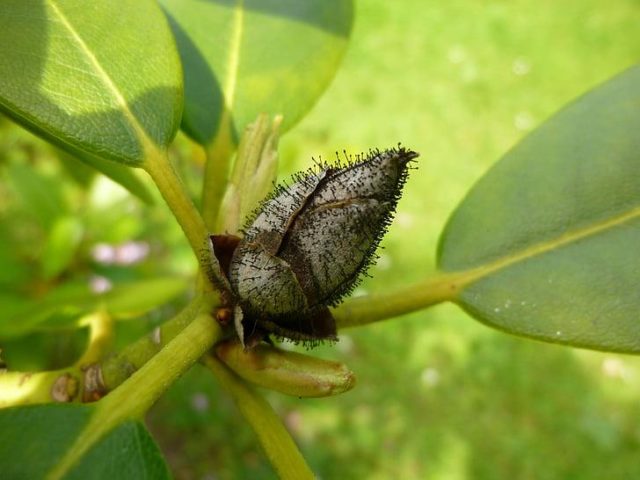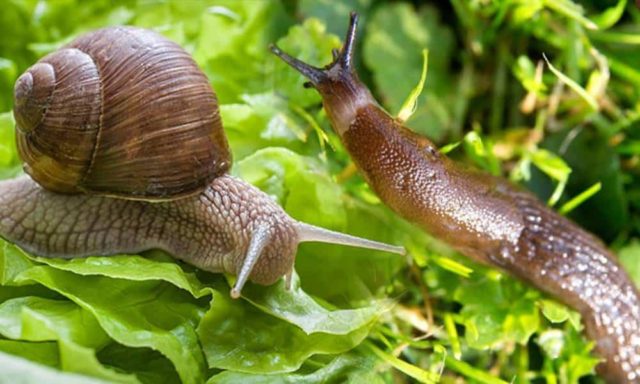Content
Most rhododendron diseases develop as a result of improper, ill-considered or inept agricultural practices. The plant is vulnerable to infectious, fungal and physiological diseases, it is often inhabited by insect pests. Without timely treatment, the bush dies. That is why the main diseases of rhododendrons and their treatment with photos will be valuable information for connoisseurs of this culture.
Infectious and fungal diseases of rhododendrons
With proper agricultural technology, the bushes are resistant to infectious and fungal infections. Processing of planting material, the correct choice of location on the site, a regular regime of watering and feeding allow you to maintain the health of the plant.
Waterlogging, darkening, excess or, on the contrary, lack of nutrients lead to decay, growth retardation, the development of fungus, mold, infection and, ultimately, to the death of the rhododendron.
Bacterial root cancer
This is a dangerous infectious disease that continues to develop even after the death of the plant. Its causative agent is Agrobacterium bacillus, which infects the roots of rhododendron.
If untreated, the infected plant slows down in growth, shedding leaves and buds. The main symptoms of bacterial cancer are:
- decay of the root collar;
- the formation of large, rounded, very dense growths throughout the root system.
As a treatment at an early stage of the disease, the bush is treated with a Bordeaux mixture. If the infection is running, the rhododendron is uprooted, burned, the site is disinfected with fungicides.
Tracheomycotic wilt of rhododendron
The causative agent of the disease is the fungus Fusarium oxysporum, which affects the vascular system of the bush. An infection develops in the roots, in which it then causes rapid decay, as a result of which the movement of nutrients is blocked.
If the leaves of the rhododendron turn brown, this is the first sign of the disease. Without treatment, over time, the stem becomes thinner, its crown dries up, a gray bloom appears - mycelium. The plant gradually dies.
The bush can be saved if treatment with Bordeaux liquid is started on time. The affected areas are cut off, burned, rhododendron is sprayed with Fundazol (0.2%). A little of the drug is poured into the root hole.
Phytophthora root rot
The disease occurs as a result of waterlogging of the root system of the plant. There may be several reasons:
- excessive watering of the rhododendron;
- insufficient drainage layer;
- heavy, clayey substrate that does not provide adequate moisture transmission;
- infection of cuttings in the nursery.
When infected, dark crimson or burgundy spots appear on the leaves of rhododendron, the crown of the plant becomes withered, drooping. Stems, cuttings, shoots acquire a purple hue, become thinner.Without treatment, the growth of the bush slows down, flowering stops completely.
Most of all, the disease affects the roots of the rhododendron. They begin to rot, change color to dark brown, and stop feeding the plant.
Treatment begins with limiting watering, allowing the soil to dry well. The bush, stems, root space are sprayed with fungicides (Bordeaux mixture, Fundazol, Quadris). If no improvement is observed within 2 - 3 weeks of the course of the disease, and the leaves of the rhododendron droop, the plant is uprooted, the soil is re-disinfected.
Gray rot of rhododendron
The causative agents of this disease are spores of the fungus Botrytis cinerea. They are volatile, transmitted by air from an infected bush to a healthy one. Most often, they affect dead, dried shoots, buds, leaves, then move on to the rest, living parts of the plant.
The first sign of infection is brown or brown spots on the rhododendron. Over time, the top layer of leaves dries up and begins to crack. With high humidity, a grayish, fluffy bloom is noticeable on the affected areas.
The disease often affects the rhododendron after winter. In the photo you can see young shoots with gray rot.
To treat the bush, damaged leaves, buds, ovaries are removed, the crown is sprayed with Fundazol once every 2 to 3 weeks until the end of the flowering period.
Rot of seedlings, seedlings and buds
A sudden mass wilting of young shoots of rhododendron is observed when the seedlings are affected by fungi (Rhyzoctoni Solani Kuhn, Rhyzoctonia, Botrytis or Pythium). If treatment is not started on time, the root collar of the shoot oozes out, turns black, the stem becomes soft. The sprout falls on its side and gradually dies off.
On closer inspection, white or brown fungal spores can be seen on the buds and leaves of the rhododendron, and the surface of the soil is covered with a net of fine white threads.
The causative agent of bud rot, Pycnosteanus azaleae, is carried by cicadas. The buds of the plant turn brown, dark brown and gradually fall off.
After the buds die off, the disease continues to develop, the mycelium grows into the stems, affects the bush from the inside. Without treatment, the rhododendron withers, stops growing, and eventually dies.
The causes of the disease most often lie in the infected planting material or in non-observance of the rules of agricultural technology: the close location of seedlings, disruption of air exchange, high humidity in the greenhouse.
For treatment, seedlings of rhododendron are covered with fine wood ash or Fundazol. The buds are sprayed with copper-containing preparations 2 times a month until the end of the growing season.
As a preventive measure, the seedlings purchased in the nursery are disinfected. In addition, monitor the frequency of watering, sufficient ventilation and lighting (when planting in a greenhouse).
Dying off of shoots
The disease is typical for rhododendrons growing in the shade. The fungus Phytophtora cactorum attacks young shoots. The buds on them do not bloom, turn brown and fall off.
In the absence of proper treatment, the disease passes to the stems, young leaves of the rhododendron begin to curl. Gradually, the bush dies.
To stop the dying off of shoots, the affected branches are removed, the crown is sprayed every 2 weeks with any preparation containing copper, until the onset of autumn leaf fall.
Root rot
The disease spreads from the root up the stems. Most often it occurs as a result of excessive watering or during prolonged rains with low ambient temperatures.
At an early stage of infection, the leaves of a rhododendron wilt for no apparent reason. Then they darken, turn brown, and young buds gradually die off.
The roots and the lower part of the bush begins to rot, darkens, acquires a brown tint.
In most cases, the disease is fatal for rhododendron and cannot be treated. The shrub is uprooted and burned.
It is possible to prevent the development of root rot at the stage of planting. To do this, it is worth carefully balancing the acidity of the soil in accordance with the recommendations for a specific variety of rhododendron, monitoring the moisture content and timely removal of weeds.
Swelling of rhododendron leaves
Leaf swelling is also called thick leaf or rhododendron waxy disease. The causative agents are fungi of the Exobasidium family. When infected on young shoots, round, fleshy, spherical growths are formed, ranging in size from a pea to a walnut.
Symptoms of the disease (depending on the type of pathogen):
- white or pinkish-red "pads" grow on young branches;
- the leaf plate of the rhododendron from above becomes yellow-brown, the reverse side is covered with a mealy bloom;
- dark brown spots appear, white mushroom spores are visible;
- rhododendron leaves become pale, abnormally thick and large; over time, they wrinkle, mold, dry out.
Treatment consists in the timely removal of the affected branches, periodic treatment of the bush with fungicides with copper.
Rhododendron spots
The disease is common in both domestic and garden varieties. Fungal spores infect adults and young rhododendrons.
You can recognize the pathogen by the shape of the spots:
- Pestalociic spotting is localized on the crown and stems. The disease is characterized by the appearance of irregular brown spots with a brown frame. Spore pads are visible over the damaged areas. Treatment: removal of infected shoots, spraying with Bordeaux liquid or Camulus.
- Septoria mottling appears on the leaves of rhododendron. You can recognize the disease by red rounded spots with black fungal spores in the center. As the disease progresses, the leaf plate dries, turns yellow, curls up. Treatment includes pruning the infected part of the crown, processing the plant with Camulus.
- Anthracnose spotting is determined by brown, brown spots with scattered dark spores on the upper surface of the leaf blade. The reverse side of the leaf turns pale. Gradually, the disease spreads to the stems, weakening the plant. Treatment: pinching damaged leaves, processing branches with a Bordeaux mixture.
- Phylostictic mottling is characterized by the appearance of red lesions that turn white over time, dry out and crumble. In the advanced stage, black dots are visible on the leaf plate - spores. Treatment is reduced to careful pruning with complete removal of infected shoots, spraying with a suspension of Tsineb or Kaptan.
The cause of the development of the disease is most often incorrect agricultural technology: excessive watering, incorrect pruning, untimely fertilization.
Cercosporosis
The disease develops on the lower tiers of the bush, caused by spores of the fungus Cercospora. In the early stages of infection, the leaf blades are covered with brown, uneven spots with a pronounced red border. Then a thin gray bloom appears on the foliage - this means that the mycelium is growing.
In the absence of treatment, the disease progresses, the entire reverse side of the leaf becomes dark brown, the shoots stop growing, flowering does not occur. Without treatment, the rhododendron dies.
To get rid of the fungus, an integrated approach is used: diseased branches are removed, the bush is sprayed with Ditan, Fundazol.
Rust
The disease affects small-leaved varieties, it manifests itself most often in the fall. Rusty, brown, reddish or yellow spots appear on the leaves of rhododendron. By spring, there will be a noticeable accumulation of reddish-brown spores at this site.
The infection only affects the crown, without affecting the roots or buds. In rhododendron, the leaves turn yellow and fall prematurely. Without treatment, this leads to the death of the shoots and the death of the entire plant.
At the first sign of rust infection, diseased leaves are cut off and burned. The bush is treated with preparations with a high copper content (for example, Bordeaux liquid).
Mosaic
An incurable viral disease caused by the Rhododendron mosaik virus. Most often it is carried by insects: aphids, bugs and others.
When infected, the rhododendron stops blooming, its growth slows down. The leaves of the plant become thinner, turn yellow in places, and brown spots appear on them. The surface becomes rough, rough, greenish tubercles - calluses are formed. In the advanced stage, the leaves of the rhododendron darken, strongly deformed. A "mosaic" pattern appears.
It is impossible to cure rhododendron. To save other plants on the site, the damaged bush is uprooted and burned, and the soil is treated with Aktellik Confidor.
The disease most often affects alpine varieties.
Nonparasitic rhododendron diseases and their treatment
In addition to diseases caused by fungal spores, bacterial or viral microorganisms, rhododendron is susceptible to nonparasitic (physiological) lesions. The reason for their development is the wrong location of the bush, mistakes in agricultural technology, unfavorable weather conditions.
To save the bush, you need to know the main non-parasitic diseases of rhododendrons, prevention and control measures.
Chlorosis of rhododendron leaves
Chlorosis is detected by pale spots that have appeared on the leaf plate. At an early stage, the leaf veins remain bright green, then they turn pale. The disease spreads to branches, young shoots, buds, shrubs becomes vulnerable to sunburn.
Chlorosis develops with a lack of nutrients (magnesium and iron), as well as increased acidity of the soil. If the leaves of a rhododendron turn yellow for no apparent reason, the reason should be sought in soil depletion.
The disease does not require special treatment. To correct acidity, preparations containing magnesium and iron sulfate are introduced into the soil.
Sunburn
Burns on leaf blades occur in autumn with strong fluctuations in air temperature or in early spring, when the plant comes out of the winter state. If the thermometer drops below 15 degrees below zero, the leaves of the rhododendron curl and freeze. The daytime sun heats up the plate, on which moisture is actively evaporated. As a result, the branches turn yellow, become dry, brittle.
There is no cure for sunburn. To prevent them, the shrub is shaded or transferred to a darkened area of the garden.
Winter drying
The disease manifests itself in the spring if the winter was harsh, with prolonged, severe frosts. After thawing the soil and establishing positive average daily temperatures, when the branches should grow, the leaves of the rhododendron remain brown, twisted. Gradually they dry up and fall off, the bush dies.
The most common cause is the winter loss of moisture, as well as damage to the waterways from the roots to the leaf plates. As a treatment, experienced gardeners recommend abundant watering, frequent irrigation of the crown. The restorative procedures are carried out within 1 - 2 weeks. During this time, the leaves should unwind, restore turgor, and begin to grow.If this did not happen, the rhododendron died.
The leaves of rhododendrons turn red even under adverse weather conditions. If the waterlogged soil does not have time to freeze before heavy snowfall, a greenhouse effect is created, the roots of the rhododendron rot. As the temperature decreases, they freeze out, and the plant dies by spring.
Nitrogen starvation
With a lack of nitrogen compounds in the soil, the young leaves of the rhododendron become light, small, grow poorly, and the old ones turn yellow and fall off. By the end of the growing season, only the fresh crown of the current year remains on the shrub, while with sufficient nutrition, evergreen branches remain for 4 years.
When the first signs of starvation of the rhododendron appear, you need to make a top dressing - potassium nitrate or ammonium sulfate. Further treatment consists in timely fertilization of the crop twice a year.
Soaking
The disease is typical for rhododendrons planted in a heavy, clayey substrate, as well as placed in dark, poorly lit areas of the garden.
Insufficient drainage layer causes waterlogging of the basal hole. As a result, the leaf plates first become light green, dull, then begin to turn yellow, fall off, flowering does not occur. In this case, the root and root collar remain intact. Without timely treatment, the rhododendron will rot and die.
When soaked, watering is stopped completely until the soil is completely dry. Sand, straw, any mixtures that improve drainage properties are introduced into the root space.
Insufficient or excessively high humidity
Insufficient or excessive moisture in the soil and ambient air is dangerous for rhododendron.
Excessive watering leads to decay of the roots, a general weakening of the bush, and its infection with spores of pathogenic fungi and microorganisms. With late autumn irrigation, the rhododendron does not have time to slow down its growth, adapt to a decrease in temperature and, as a result, freezes out.
Insufficient watering dries up the leaf plates, deprives the shrub of nutrition. Such plants do not tolerate winter well, die from drying out, they are often affected by bacterial diseases and pests.
Lack or excess of light
If the rhododendron is improperly located on the site, problems associated with a lack or excess of light may occur. In the first case, the shrub stretches out, weakens, and loses its attractiveness. Flowering usually does not occur.
In the second - if the plant is often exposed to direct sunlight - the rhododendron is attacked by diseases and pests. Sunburn appears on it, the shoots are inhabited by ticks and other insects.
Improper substrate preparation
The preparation of the substrate is an important stage in planting a rhododendron, on which its growth, development, flowering and vitality depend.
High acidity of the soil causes the development of chlorosis, insufficient drainage properties - rot, wilting, soaking. Sandy soil requires frequent watering, which leads to the leaching of nutrients, especially nitrogen.
Rhododendron pests
The shrub is often attacked by pests. Timely treatment will avoid the death of the plant.
The photo guide will help you to recognize the insect that causes rhododendron disease, to accurately select the treatment regimen, dosage and the desired drug.
The most common pests:
- Furrowed weevil - a black beetle, 8 - 10 mm long, lays white larvae in the ground, which gnaw at the roots. Rhododendron suddenly fades, dies.Adults damage leaf plates: eaten areas appear along the edges. Treatment includes spraying with Splander, Spark, Decis, Aktellik.
- Spider mite - actively reproduces in hot, dry weather. It is almost impossible to notice even an adult: the size of the tick does not exceed 0.5 mm. The symptom of its appearance is a thin cobweb covering the underside of the leaf plate, buds, and rhododendron buds. Treatment: treatment with Fufanon, colloidal sulfur, Aktellik, Fitoverm, Karbofos.
- Acacia false shield - large (up to 6.5 cm) insect, light brown color. The pest, attaching itself with its proboscis to young trunks, damages the bark and feeds on plant juices. Rhododendron leaves become sticky. Gradually, the shrub weakens, loses its decorative appearance, and dies. Treatment: spraying with Fitoverm, Karbofos, Fufan, Aktelik, phosphorus-containing compounds.
- Tobacco thrips - yellowish-brown winged insect about 1 mm long. An adult female is able to lay up to 100 eggs in the tissue of the leaf plate. On rhododendrons, the pest most often affects the buds. They do not open, turn yellow and disappear. Thrips is a carrier of dangerous viruses. Treatment: disinfection with neonicotinoids, organophosphorus compounds, pyrethroids and other insecticides.
- Rhododendron mite - settles on varieties with a pubescent lower part of the leaf plate. When infected, the plant turns yellow, dark spots appear on it. If the leaves of a rhododendron turn black and fall off, the disease is already running. It is not difficult to see a tick, an adult reaches 3.5 mm, a larva - 2.5 mm. Treatment: manual collection of insects - at an early stage, as well as prophylactic spraying with nicotine or pyrethrum extract; with an advanced disease - complete removal of shoots.
- Whitefly - carries viral diseases. The most common parasite is on large-leaved rhododendrons. Treatment: treatment of shoots with neonicitinoids, nicotine-based pesticides.
- Molluscs, snails, slugs - appear with excessive soil or air moisture. Buds, young shoots, buds are affected by pests. Treatment includes: manual collection, insecticide treatment.
Conclusion
The listed diseases of rhododendrons and their treatment with photos will be useful to gardeners to prevent problems with the development of culture. With the wrong planting site, unfavorable weather conditions, non-compliance with the irrigation regime, the bushes are susceptible to severe, incurable viral diseases, they are often attacked by pests. To save a damaged plant, its timely processing, the correct choice of the drug and the calculation of the dosage, it is important to timely determine the pathogen or insect pest and carry out all the necessary actions, depending on the degree of damage, the age of the shrub, and the season.
